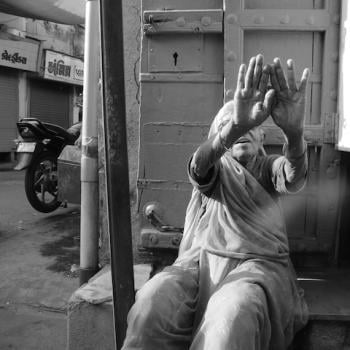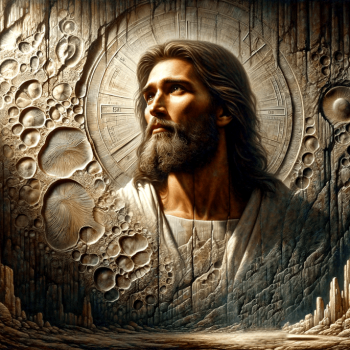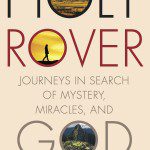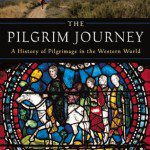I don’t normally post the occasional sermons I give at my home church, but today is an exception. It’s a bit long, but if you nod off in the middle of it you don’t need to let me know. The text I’m working with is Genesis 22: 1-14:
God tested Abraham. He said to him, “Abraham!” And he said, “Here I am.” He said, “Take your son, your only son Isaac, whom you love, and go to the land of Moriah, and offer him there as a burnt offering on one of the mountains that I shall show you.” So Abraham rose early in the morning, saddled his donkey, and took two of his young men with him, and his son Isaac; he cut the wood for the burnt offering, and set out and went to the place in the distance that God had shown him. On the third day Abraham looked up and saw the place far away. Then Abraham said to his young men, “Stay here with the donkey; the boy and I will go over there; we will worship, and then we will come back to you.” Abraham took the wood of the burnt offering and laid it on his son Isaac, and he himself carried the fire and the knife. So the two of them walked on together. Isaac said to his father Abraham, “Father!” And he said, “Here I am, my son.” He said, “The fire and the wood are here, but where is the lamb for a burnt offering?” Abraham said, “God himself will provide the lamb for a burnt offering, my son.” So the two of them walked on together.
When they came to the place that God had shown him, Abraham built an altar there and laid the wood in order. He bound his son Isaac, and laid him on the altar, on top of the wood. Then Abraham reached out his hand and took the knife to kill his son. But the angel of the LORD called to him from heaven, and said, “Abraham, Abraham!” And he said, “Here I am.” He said, “Do not lay your hand on the boy or do anything to him; for now I know that you fear God, since you have not withheld your son, your only son, from me.” And Abraham looked up and saw a ram, caught in a thicket by its horns. Abraham went and took the ram and offered it up as a burnt offering instead of his son. So Abraham called that place “The LORD will provide”; as it is said to this day, “On the mount of the LORD it shall be provided.”
Let me begin by asking this: is there a more troubling Bible story than the one we heard this morning from Genesis? Oh, I know there are some strong contenders for that honor, but honestly, this one is a doozy.
In his old age, Abraham has been given a son, the light of his life and the one who God has promised will give him many descendants. But then the unthinkable happens. God asks Abraham to sacrifice that beloved son, to take him up on the mountain and kill him. It is hard to imagine a more awful, horrifying command than that. Now we know how the story turns out, of course. God sends an angel to stop the sacrifice at the very last moment. He commends Abraham for his faith and for passing the most rigorous test anyone could be given. And yet the question remains: what sort of God would require such a test in the first place?
Here at Trinity I’ve heard a number of people passionately condemn this story, calling it barbaric. And that opinion is certainly understandable, for the demand to sacrifice a child, even if it is only a test, is surely an example of primitive religious belief at its worst.
That said, there are a variety of interpretations of this story. Some theologians say that the point of the tale is to emphasize that God does not require human sacrifice, unlike the gods worshipped by the pagan tribes of Canaan. The philosopher René Girard uses the story to explore the dynamics of violence and scapegoating. The near-sacrifice of Isaac is meant to show how twisted and sick the process of scapegoating is, this taking of an innocent life to try to make right what has gone wrong in the larger society. The lesson is that God does not want such sacrifices, that he does not require scapegoats, and so God’s angel stops the killing just as Abraham raises the knife.
![Kierkegaard[1]](https://wp-media.patheos.com/blogs/sites/628/2011/06/Kierkegaard1-150x150.jpg)
Kierkegaard uses the story of Abraham and Isaac as the centerpiece of his book Fear and Trembling, published in 1843. The title is apt, for surely we readers also approach this tale with fear and trembling, just as Abraham does the altar where he is to sacrifice his son. For Kierkegaard, this story is not about blind faith in God, but rather about leaving behind blind faith in ourselves. He writes from within the tidy, controlled, conventional world of Danish Lutheranism. He challenges the complacency of Christians who see their relationship to God as safe, orderly and predictable, the sort of amiable friendship you’d have with a kindly uncle. Instead Kierkegaard says that only after abandoning what is safe and easy can one truly embark on a spiritual path. The story of Abraham and Isaac, then, becomes a cautionary tale of the extraordinary demands of a faithful life. The kind of faith that Abraham exhibits is non-rational—it is so foreign, so unexpected, in fact, that it can only be understood as a miracle.
Kierkegaard uses the phrase leap of faith to describe this process. Scholars say that actually leap to faith is probably a better translation, but the meaning is the same. At some point on the spiritual path, logic and reason are inadequate. A leap of faith is characterized by absolute uncertainty, which is why it is undertaken in fear and trembling. Unlike those who would try to prove God’s existence with philosophical arguments, Kierkegaard says that belief in God is a personal choice that must be made by each person individually, and that it is a journey into paradox and uncertainty. Faith requires passion, he writes. Its opposite is not doubt, but rather indifference.
Now we rationalists can think of all sorts of problems with that approach, can’t we? Too often we have seen the terrible results that can happen when someone thinks they have heard the voice of God asking them to do some unspeakable act. We think of terrorist attacks and suicide bombers and mentally ill criminals. Or even if the error is not so grave, we think of those poor benighted souls who lack our religious sophistication, those people who don’t underpin their spirituality with arguments and logic and good manners. There’s a reason why many Episcopalians, in particular, view this Biblical story with disdain, for it is a story of raw power that offends our sensibilities at a deep and basic level.
![Regine_olsen[1]](https://wp-media.patheos.com/blogs/sites/628/2011/06/Regine_olsen1-150x150.jpg)
Regine Olson was devastated for a time, but eventually moved on and married another man. Kierkegaard poured himself into his writing, and his love for Regine became in many ways his philosophical and religious muse. Scholars speculate that his fascination with the story of Abraham and Isaac is in part a meditation on his own sacrifice of his happiness with Regine. He, too, gave up what he loved most for God.
So this leap of faith idea is much more than the glib, trite phrase that it has become in popular culture. That leap of faith is actually a terrifying journey into the unknown, and there is no guarantee of happiness at its end.
We make a mistake, I believe, if we think this phrase applies only to a few individuals who dedicate their lives to rare intellectual and spiritual pursuits. This leap of faith is not so foreign to us, really. Think of the Sunday mornings when we have baptisms, when we gather around the font and see parents holding their children in their arms as they make solemn promises on their behalf. Is there any leap of faith more fraught with uncertainty than having a child? I think that is why we look observers look at those parents so intently, because at some level we realize that they are at the beginning of a journey into the unknown, that we are witnessing the equivalent of Lewis & Clark setting off across the Missouri River into unknown lands. We recognize that something both sacred and dangerous is going on before us. We know that their journey will inevitably bring pain and loss as well as joy.
I’ve seen the leap of faith as well in those who are considering ordination in the church. I’ve been part of a number of discernment committees, the groups that come together to help weigh the authenticity of someone’s call. I was the focus of one such committee myself when I was considering ordination to the deaconate. At one point in every process, there comes a discussion of just how crazy does someone have to be to pursue ordination. You have to be a little bit crazy to want to do it, but not so crazy as to disqualify yourself. How much safer and easier it is not to take the leap at all.
Certainly many of us have made leaps of faith in our careers as well, pursuing a passion for music or writing or philosophy or art, even when our parents despaired and we struggled to find our way. There is no guarantee that after such leaps we will land safely, of course—in fact, that is exactly the point that Kierkegaard makes. The leap is into uncertainty. God does not promise us a smooth landing.
And the question remains of how do we know when and where to take the leap. Think of poor tormented Kierkegaard, passionately in love with Regine Olson but despairing of his ability to make her happy. One could argue that Kierkegaard’s leap of faith should have been taken towards human love, and that he made the wrong choice to remain alone. And in our own lives, many choices beckon us, each full of uncertainties. Martin Luther King, Jr. put the dilemma in terms of a homely and simple metaphor: “Faith,” he said, “is taking the first step when you don’t see the whole staircase.”
As for Soren Kierkegaard, after breaking off his engagement to Regine Olsen he lived the rest of his life alone. As he grew older his peculiar ways became the focus of much amusement and derision in his home city of Copenhagen. But because of his decision not to marry, he had the time to create an enormous outpouring of creative work, complex and ground-breaking philosophical and religious texts that still inspire people around the world. He took a leap that by necessity closed other possibilities in his life, and he paid a high cost for his choice. And at the end of his life, he left all his worldly possessions to Regine Olson, the woman whom he had loved from a distance for nearly two decades.
We don’t know, do we, what the leap of faith will cost us? We approach the edge with fear and trembling. And yet when we leap, we honor what is most holy and true within us, and we hope that somehow, somewhere, there will be arms to catch us.














